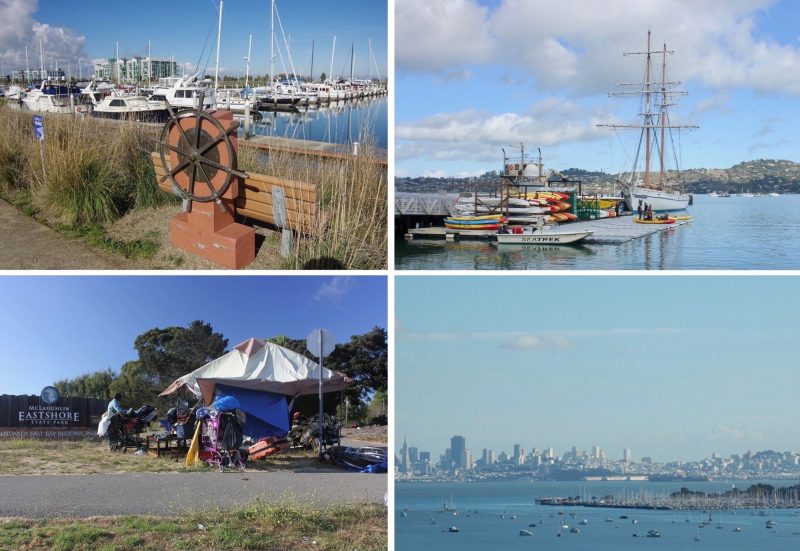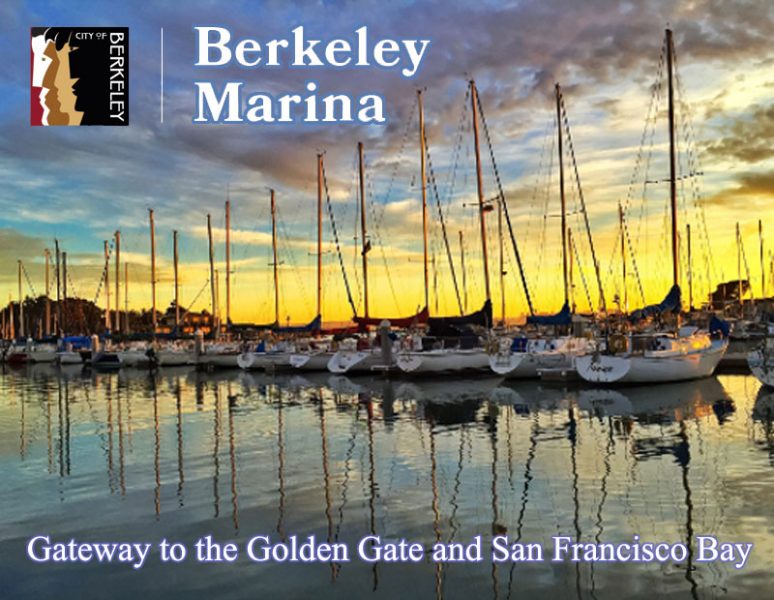
Powerful Tropical Cyclone Yasa Slams into Fiji
The South Pacific island nation of Fiji is recovering from one of the most powerful cyclones to ever develop in the region. As of this writing on Friday morning, severe Category 5 tropical cyclone Yasa has left Fiji in its wake. Yasa is now severely diminished in strength as it heads toward Fiji’s neighbor to the east, Tonga. Before Yasa had its first interactions with land, the cyclone dropped barometric pressures below 900 mb and produced wind gusts of more than 200 mph. Even more terrifying than Yasa’s sheer strength was the storm’s very unpredictable track. While computer models successfully predicted Yasa’s move to the northwest before it stalled and headed back toward land, there was a lack of consensus as to what track the storm would take on its final approach toward Fiji.
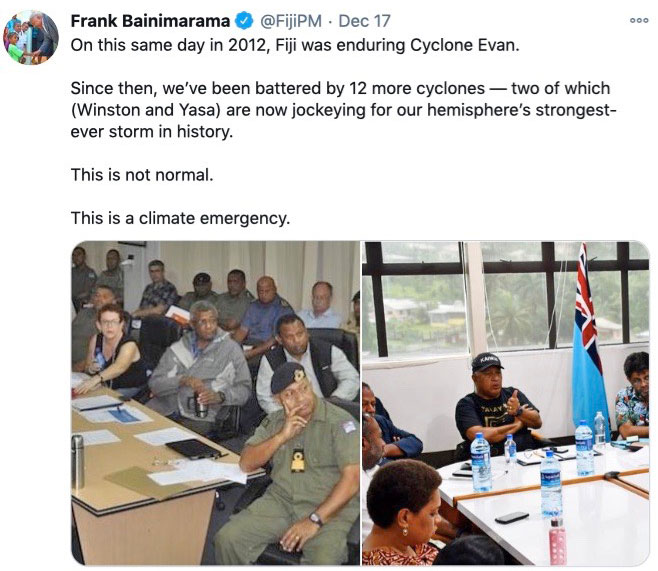
Normally in December, the only sailing yachts left in Fiji belong to the locals who live there, a few dozen boats stored in cyclone pits in Vuda Marina, and the small minority of boats whose owners choose to stay put in summer and cruise Fiji during the cyclone season. But 2020 is far from a normal year. In an unprecedented event, many yachts stayed in Fiji against their owners’ will, only to have one of their worst nightmares realized. With the region’s cyclone havens of Australia and New Zealand refusing to implement common-sense quarantine-at-sea protocols and allow entry for the vast majority of foreign cruisers — even those coming from COVID-free Fiji — many were left to fend for themselves and endure a Fijian cyclone season.
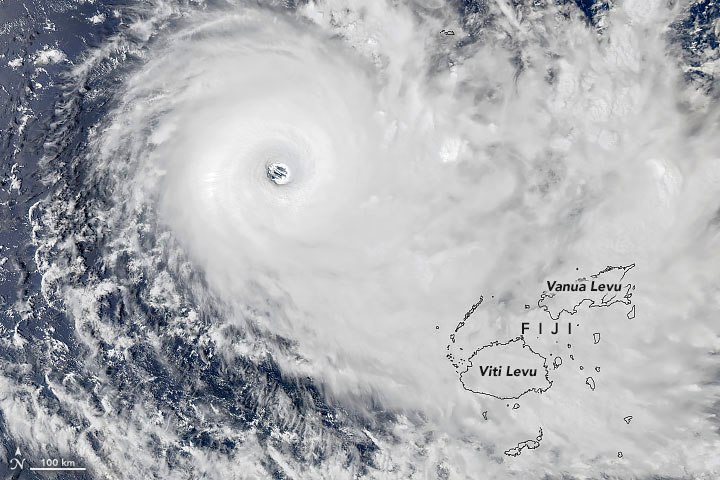
With Yasa’s inevitable path south stalled by a large area of high pressure over New Zealand, the storm took a precarious path that included making a well-predicted move to the northwest before stalling and then aiming at Fiji. Once Yasa moved toward the islands, however, all bets were off. The American GFS model showed the storm moving southwest and either missing the country entirely or slamming into the western division. The European ECMWF model thought the storm would take a more northerly track and roll right over the northern and then eastern parts of the country. As usual, the European EC model was more accurate than the American model. This was good news for those on sailboats and in the largest population centers, but bad news for those in the north and the far east of the country.
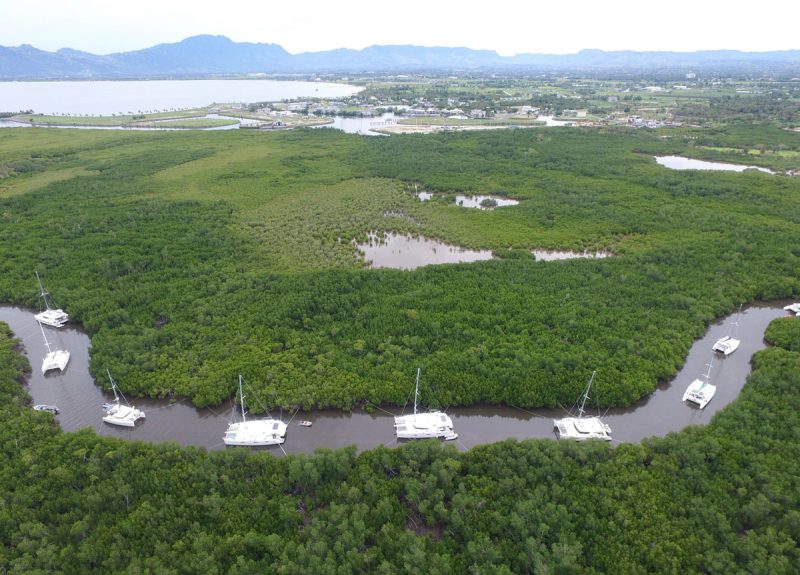
The majority of foreign cruising yachts remained in the western division and came through relatively unscathed. A few got caught out, however, and were actively cruising the eastern Lau Group of islands when Yasa made her arrival. One such boat was the 100-plus-year-old classic German yacht Pantagruel. Owned by a German sailor named Micha, Pantagruel had been operated as a pay-to-stay floating youth hostel of sorts for years. She sank in the storm at Vanua Balava island in the eastern part of Fiji. All six crew on board were rescued in a liferaft. More details of the actual events that transpired are still scarce.
Elsewhere in Fiji, reports are emerging that “Entire villages are flattened,” and that at least three people, including a three-month-old baby, have died in the storm. Many of the most impacted islands are without power and cell-phone service. A state of emergency is in effect in the most heavily impacted areas. This is only the beginning of the South Pacific cyclone season, which is predicted to have above-average levels of activity.
Ryan Finn to Sail a Proa Solo Nonstop from New York to San Francisco
Some time ago, traveling from New York to San Francisco by sail was a very popular thing. You only had two choices to get to the gold: Walk or sail. Now Ryan Finn has his eyes on being the only solo sailor to sail nonstop from New York to San Francisco on his 36-ft proa Jzerro, starting on January 1. Ryan, 42, hails from New Orleans and has successfully sailed in many ocean races, including the 2004 SSS Singlehanded Transpacific Race with his J/90 Surfinn.
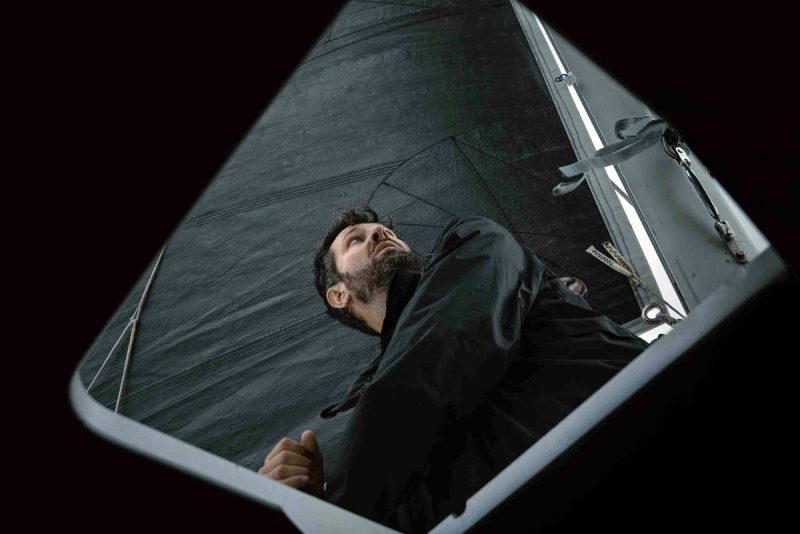
Jzerro is a version of an old Polynesian design that looks like an outrigger but with two bows and no stern and an ama that you always keep on the windward side. To tack, you just go the other way. And the modern ones are fast. Ryan plans on being at Cape Horn 30 days after starting, with a 10-knot average. “I chose a proa because I believe they are more structurally reliable than a trimaran or catamaran and much faster per foot than a monohull of comparable length,” he says.
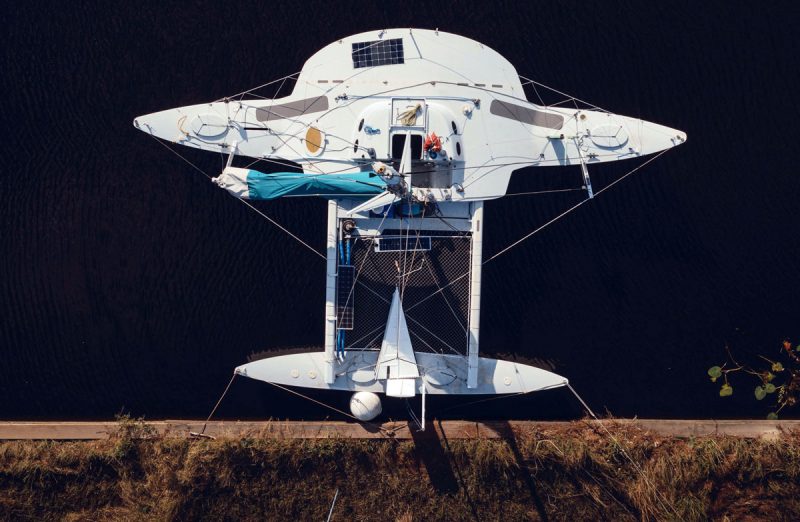
Northwest multihull guru Russell Brown designed Jzerro. Latitude’s editor Andy Turpin wrote about her back in 1998.
“I came up with the idea of a nonstop solo passage from New York to San Francisco on a small proa to prove the concept of such a boat for a long solo trip,” commented Finn. “While researching the route for this trip, I became obsessed and really haven’t thought about anything else since.” The trip is one of the hardest routes on Earth. Several record attempts have been made, but not many singlehanded.
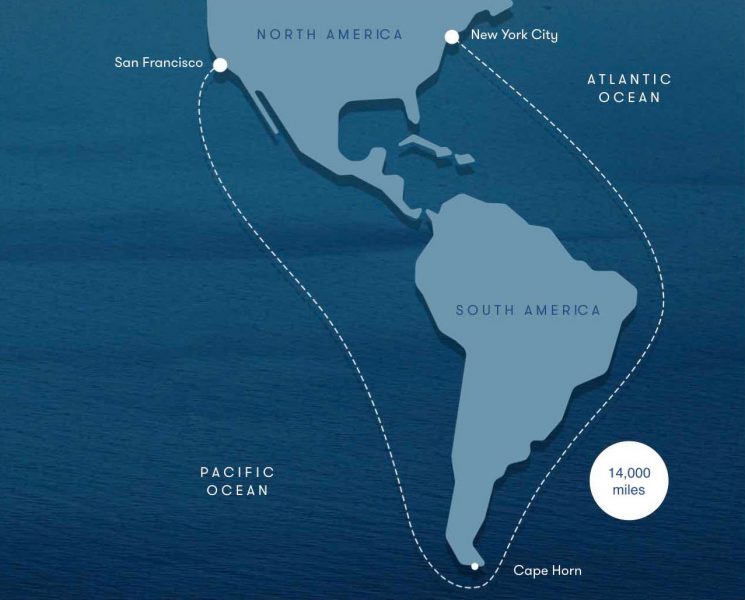
“There is only one solo record attempt I know of,“ says Ryan. “It was by Philippe Monnet in 1989 on a Shuttleworth-designed trimaran. His trip was not nonstop due to hitting ice during the trip, yet he still managed to complete it in 81 days.” The catamaran Gitana 13 still holds the crewed record of 43 days, set in 2008.
Jzerro is a simple boat and easy to sail, without a lot of tech and fancy equipment. “I don’t have a watermaker so I’m bringing all of my water with me.” And for sleep? “I’m using an NKE autopilot system with a Pelagic ram, of which I have four, and a Pelagic autopilot as backup.” If all goes well Ryan will sail into San Francisco Bay in March after about 14,000 miles of very variable conditions. You can follow him on the tracker, Facebook and Instagram, and he will update reports throughout the trip.
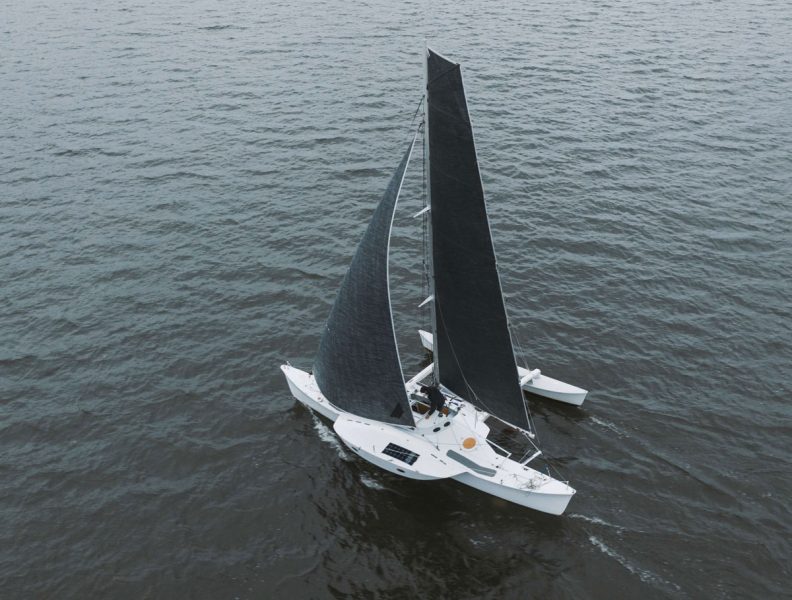
When it’s all done, we may be able to watch the movie of the adventure. “Sailor Productions, a Montreal-based production company, will be capturing footage of my journey for a 60-minute documentary film. A network hasn’t been confirmed just yet, but we’ll be sure to keep everyone posted on when and where that will be airing.”
Berkeley Marina: Gateway to the Golden Gate
America’s Cup: Place Your Bets
The results are in from the first two days of the Prada America’s Cup World Series Auckland. With two days of racing to go, New York Yacht Club’s American Magic and Emirates Team New Zealand are tied with three points each, Luna Rossa Prada Pirelli Team is in third with two points, and Ineos Team UK is last with four losses.
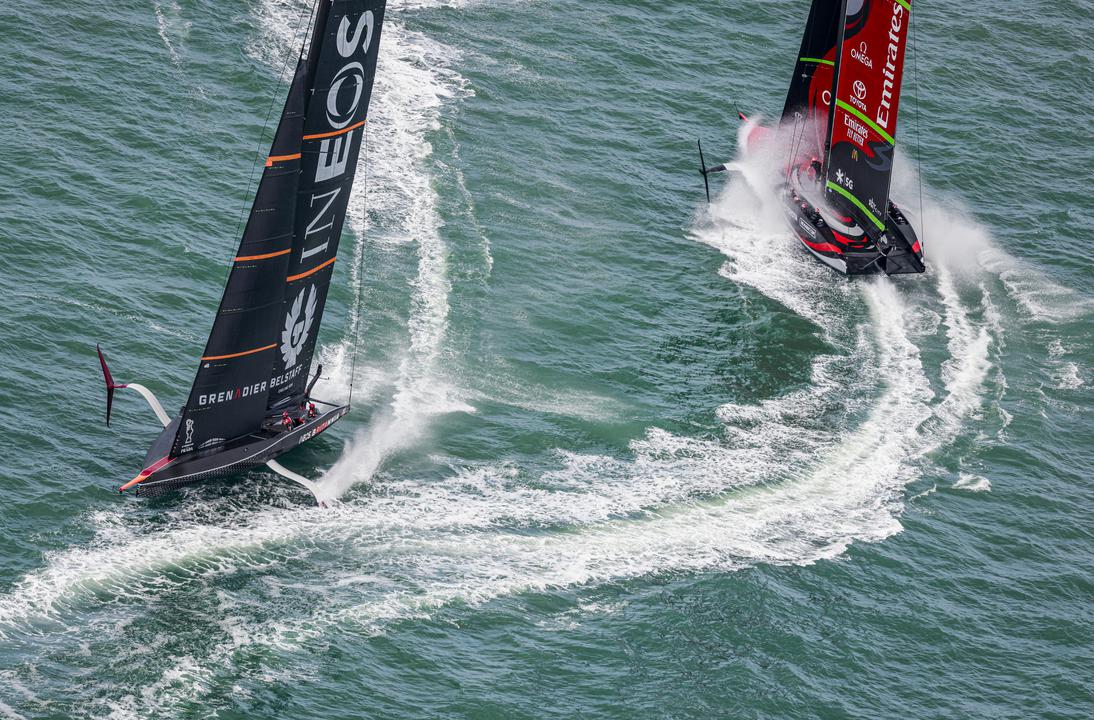
Like every Cup cycle, this one comes into focus and becomes more fun once the sailing begins. But that doesn’t stop the controversies. A big one for sailors in the US is the challenge of actually watching the racing. Most of the world seems to have access to the live racing feed on local television or social media. In the US you’re supposed to pay $175 to NBC or have the right cable bundle in order to watch. That’s a barrier for the US fan base, and a barrier to increasing the fan base. Is it only in America that you have to pay to watch the America’s Cup?
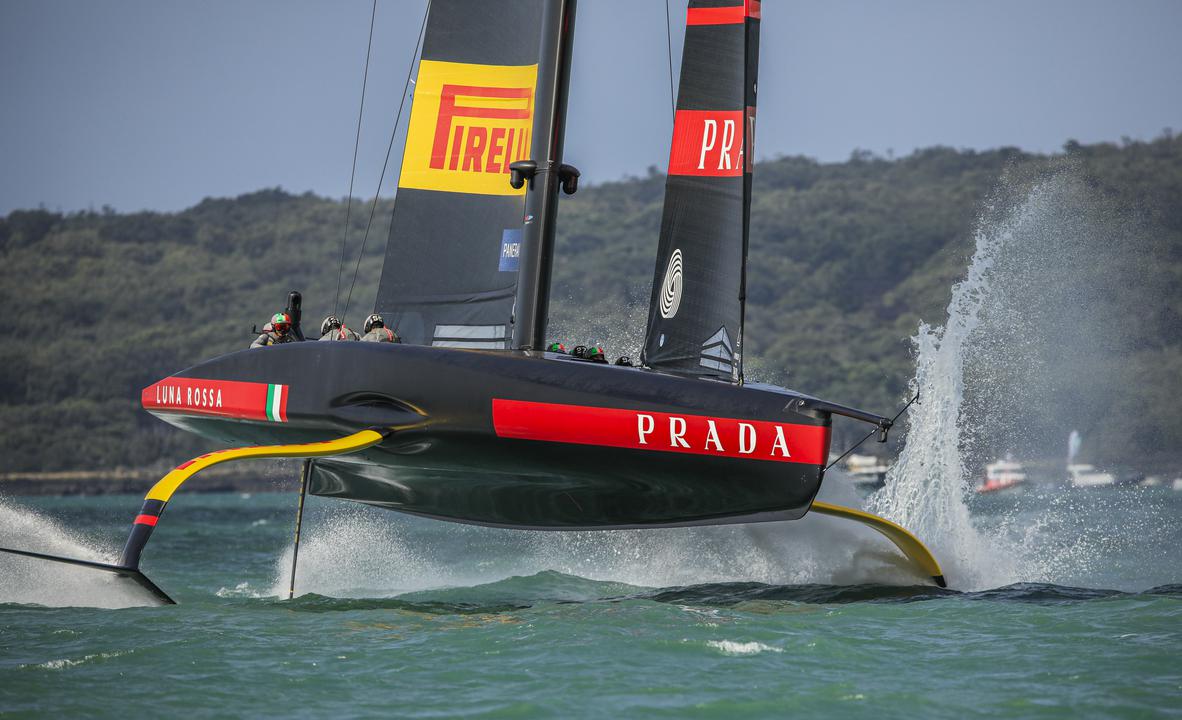
Then there’s the controversy over the boat selection. J Class sloops, 12-Meters, IACC boats, foiling cats and now foiling monohulls — regardless of the choice of weapons, winning the America’s Cup has always been an enormous, expensive challenge, but also an exceptionally rewarding achievement. For the teams, it’s an intense, multi-year effort.
For sailors it’s a spectacle. What do you like to watch? There’s no doubt the designers, engineers, builders and sailors working on these boats have created a stunning craft, but is this the kind of racing you enjoy? To us, it looks a lot like a waterborne video game.
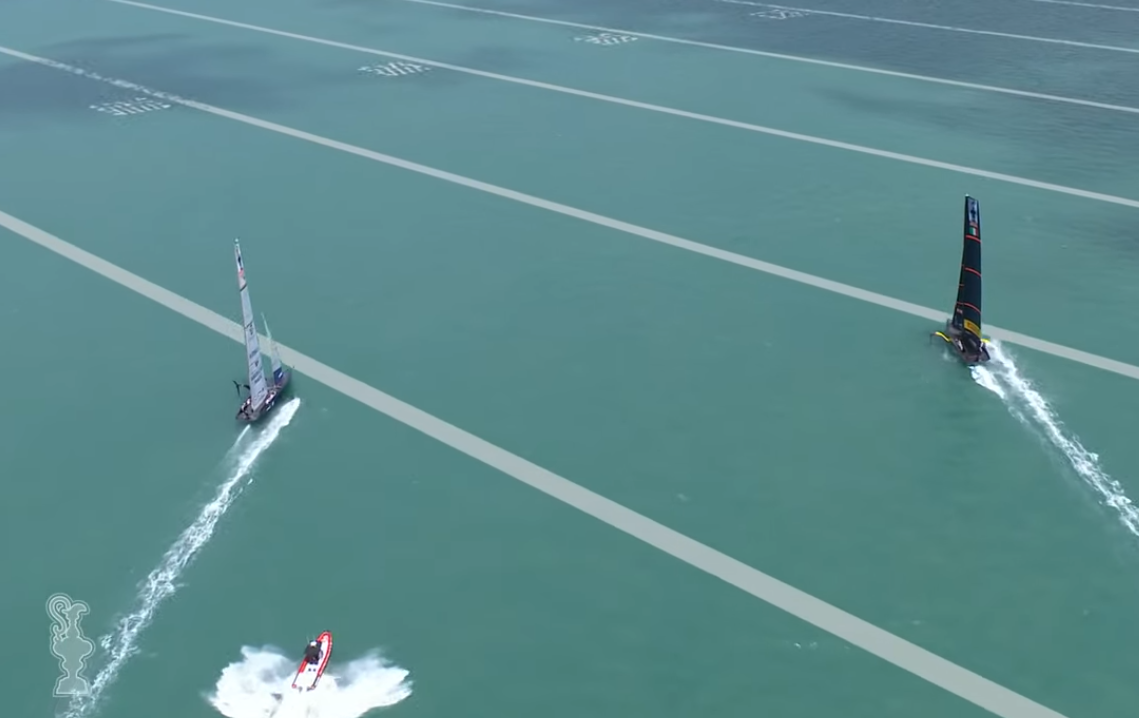
Then there’s the question of who’s going to win. With an entirely new concept, millions of design dollars, and technically challenging boats, there’s a risk that one team will have something so uniquely advantageous that the racing becomes meaningless. After these first two days, it looks like the racing will be close. In addition, the sailors already seem confident enough in their abilities to control the boats that we’ve seen some very aggressive maneuvers. We guess there will be a collision or some other colossal drama before this thing is over.
Now, for those of you watching, are you ready to put some money down on who’s going to win? Ineos Team UK appears to be the only one currently off the pace. But, as we all know, Ben Ainslie has been involved in a major America’s Cup comeback before. There’s room for the Brits, and all the teams, to improve.

It’s a shame not to be able to watch live in the US without plunking down $175, because, especially here in California, the racing is on at a convenient 6 p.m. Regardless, the real Cup racing doesn’t happen until March. Perhaps other options will emerge by then. We were told by someone to try the Tor browser, but hacking headlines keep us more paranoid than ever about new downloads to our computer. Besides, at this stage of the game, the replays and highlights available at Americascup.com or on the Americas’s Cup Facebook page provide good insight into the action ahead. And the boats are pretty cool. What do you think?
Three Years of Waterfront Reporting in a 48-Minute Podcast
In late October, former Latitude 38 managing editor — and current freelancer — Tim Henry sat down with Out The Gate host Ben Shaw to discuss Tim’s three-plus years on the local “waterfront beat.” Topics ranged from the Marinship in Sausalito, to the BCDC, to Berkeley Marina, to windsurfing and art.
Here’a a link to the podcast. And be sure to tune in next week for a series of stories about a proposed new ferry terminal at Berkeley Marina.
